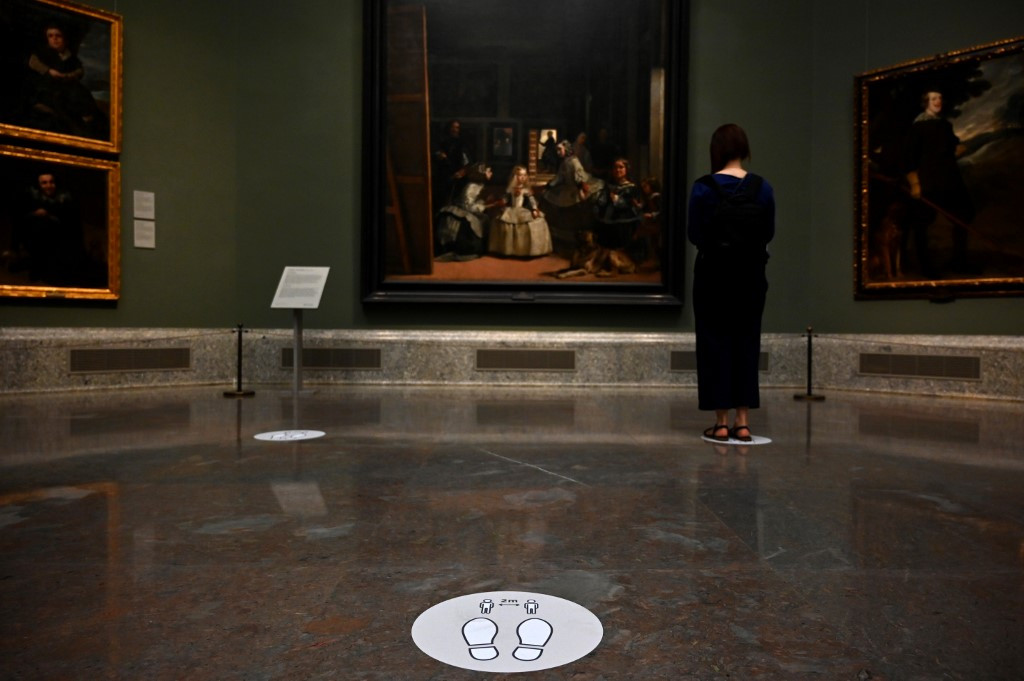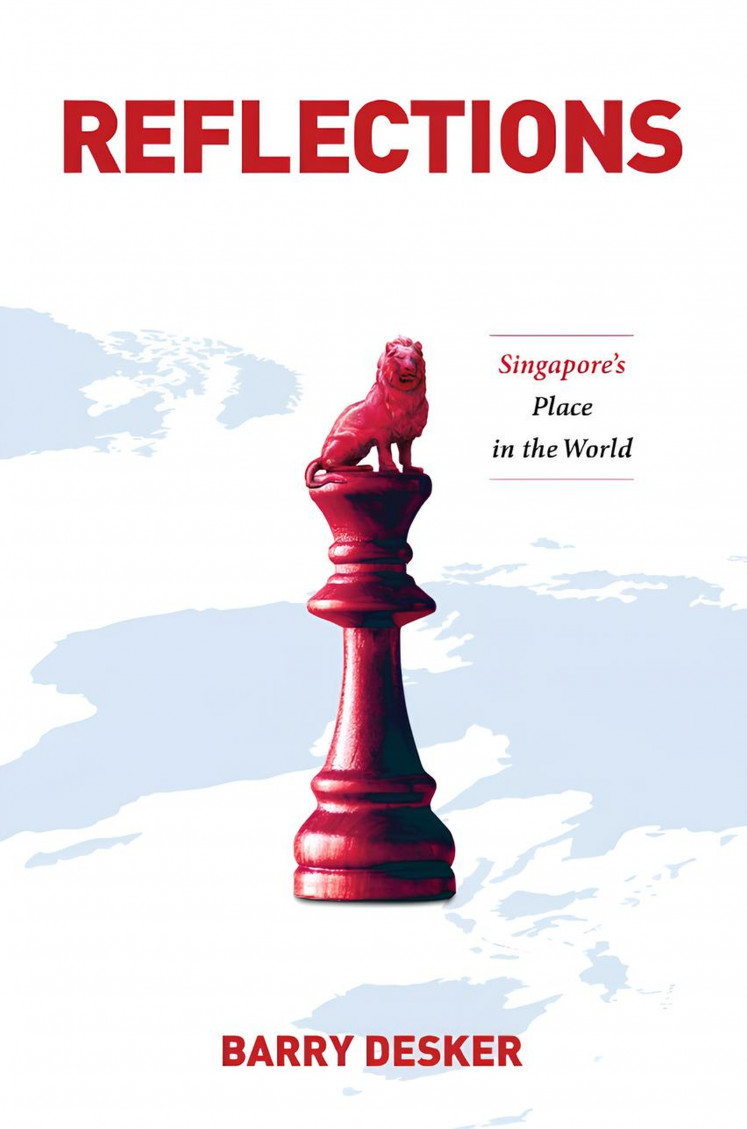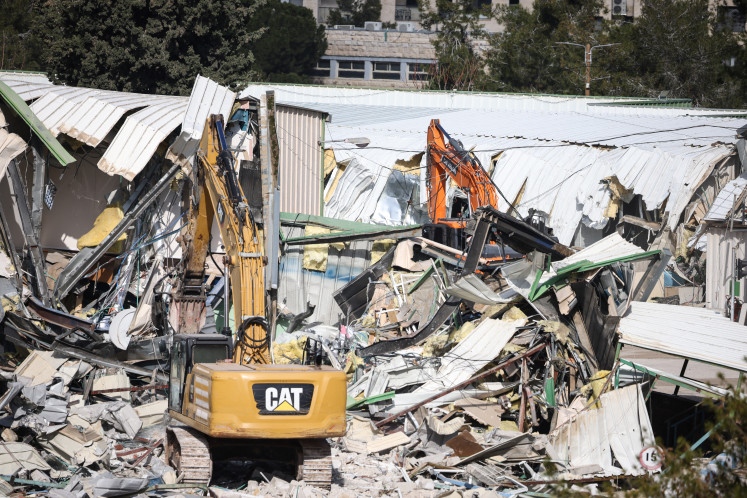Popular Reads
Top Results
Can't find what you're looking for?
View all search resultsPopular Reads
Top Results
Can't find what you're looking for?
View all search resultsA near-private encounter with 'Las Meninas' as Madrid's Prado reopens
Change text size
Gift Premium Articles
to Anyone
A
moment of almost-total silence contemplating Velazquez's "Las Meninas" is the rare opportunity offered by Madrid's Prado museum as it reopens its doors to a handful of visitors Saturday after a three-month closure.
In its vast central gallery which is bathed in natural daylight, Spain's biggest museum has put together more than 200 paintings in a new exhibition called "Reunion" that will run until September 13.
Ana Garcia, one of the museum staff tasked with guarding the celebrated painting, said the reopening will offer people a unique opportunity to get up close to works of art that are often crowded out by visitors.
"It's a luxury to be able to be alone with 'Las Meninas'," she said of Diego Velazquez's 17th-century canvas which depicts the young princess, Infanta Margarita, with her ladies-in-waiting ("meninas") wearing tight corsets and wide hooped skirts.
The place where the painting normally hangs is "the room which is most visited by big groups," said the 52-year-old who was wearing a mask and a plastic visor.
With famous museums shuttered across the globe by the pandemic, the Prado is reopening a month ahead of the Louvre in Paris, along with the city's two other big museums -- the Reina Sofia and the Thyssen.
But as Spain progressively rolls back the mid-March restrictions imposed to slow the virus' spread, the museum is reopening with a limited capacity of only 1,800 people per day compared with 15,000 on peak days last year, director Miguel Falomir said.
Although the epidemic is now well under control, it has claimed the lives of more than 27,000 people in Spain, including the head of the museum's finance division.
Read also: Bilbao's Guggenheim is Spain's first big museum to reopen
'An exquisite perfume'
"We decided to open part of the museum but to distill down our collection, as if we had used an alchemist's still," Falomir told AFP.
"The Prado is a museum which is famous for its concentration of masterpieces, so we've increased that even more and have managed to extract an exquisite perfume: the best of the best."
So every visitor will be able to spend almost unlimited time contemplating the "The Adoration of the Magi", an oil-on-wood triptych painted by Dutch master Hieronymus Bosch at the end of the 15th century.
And for the first time, the 17th century canvas of "Saturn Devouring His Son" by Flemish Baroque master Peter Paul Rubens will be showcased alongside Francisco Goya's version of the same subject, painted nearly 200 years later.
But visitors can only get in by booking 24 hours in advance, agreeing to a temperature check at the entrance and wearing a mask throughout the visit.
Read also: Spain's Prado museum unveils restored Fra Angelico masterpiece
No more big exhibitions
Falomir, who has been at the helm of the museum for three years, had previously expressed concerns about how a drop in footfall would impact the 200-year-old museum which last year counted a record 3.2 million visitors.
"If the crisis that seems to be coming lowers the number of tourists, we will have a problem," he told El Mundo newspaper in October.
The Prado receives half of its funding from ticket sales, and 70 to 80 percent of its visitors are foreign tourists.
"I was thinking more in terms of an economic crisis," he told AFP.
"Obviously I couldn't have guessed there would be a health crisis, but I'm sorry that my words were in some sense prophetic."
The epidemic and the resulting closure has cost the Prado around 7.0 million euros in lost income, the management says.
But the museum is banking on making the most of its permanent collection, without relying so much on inter-museum loans.
"I have also said that the era of 'blockbuster exhibitions' was drawing to a close, and I think this (epidemic) is going to accelerate that," he explained, saying it would complicate the cross-border movement of artworks.
The cost of putting on big exhibitions grouping works from different countries "was already going up before the virus hit, and I suppose new insurance clauses will make them even more expensive," Falomir said.
As a result, he sees big museums trying to make more of their permanent collections.
For now, visitors can enjoy a rare bit of time along with "Las Meninas" and other masterpieces, but one day the crowds will be back.
"It will take a while but tourists will once again fill up the museums", he said











